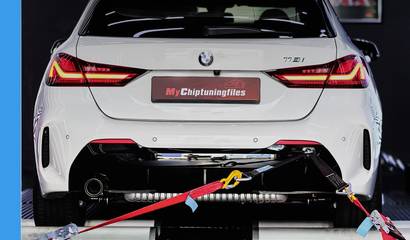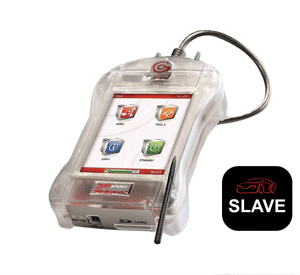Sunday 16 November

Let’s face it—cars these days aren’t just machines with wheels. They’re full-on computers on wheels. And when something goes wrong, they don’t just sit there quietly. Nope. They throw a tantrum in the form of a blinking check engine light, and that’s where diagnostic trouble codes come into play.
So what are these mysterious codes, how do they work, and how can you actually understand them? Whether you're a gearhead, a weekend DIY'er, or just someone who's tired of getting ripped off at the mechanic, this guide is gonna break it all down for you. We're talking simple, real talk—none of that tech-speak mumbo jumbo.
So Wait, What Are Diagnostic Trouble Codes?
Alright, let’s start from the top. What are diagnostic trouble codes anyway?
Basically, your car's computer (yep, it’s got a brain) is always checking to make sure everything's working as it should. When something’s off—like the oxygen sensor isn't doing its job, or your fuel mix is outta whack—the computer logs it and spits out a code. That code is the DTC—short for diagnostic trouble code.
Each code gives a clue about what went wrong. It’s like your car saying, “Hey, check this out—I think this part needs attention.” Except it does it in numbers and letters that look like some sort of alien language: P0301, U1000, B0077… Yeah, that kinda thing.
So, What Should the Technician Use When Checking for Diagnostic Trouble Codes?
Good question. You’re not gonna figure out what P0171 means just by staring at your dashboard. So, what should the technician use when checking for diagnostic trouble codes?
The answer: a scan tool. Or an OBD-II scanner if we wanna be all proper about it. This is a handheld device (or an app on your phone, if you're fancy) that plugs into the car's OBD-II port, usually found under the dash near your knees.
Once it’s connected, the scanner talks to the car’s computer and pulls up the list of codes that have been stored. The tech can then see if the problem is current, or if it's one that happened earlier and stopped. That’s super important because it helps figure out what needs fixing now, and what might’ve just been a one-time hiccup.
Okay, But What Test Identifies Diagnostic Trouble Codes?
This one’s easy, and no trick question here. What test identifies diagnostic trouble codes? The OBD-II scan.
Seriously, that’s it. You plug in the scanner, hit a few buttons, and boom—you’ve got your list of codes. No blood tests. No weird rituals. Just your car and a tool that speaks its language.
Some fancier shops have more advanced diagnostic tools that can show live data—like how much air is going into the engine, fuel trims, RPMs, all kinds of stuff. But for pulling codes? That basic scan is what does the job.
Read More: Alientech KESS3: Pricing, Compatibility, and Master vs. Slave Comparison
Now Let’s Talk About the Structure of Automotive Diagnostic Trouble Codes
So here's the deal—automotive diagnostic trouble codes all follow a format. It’s always a letter followed by four numbers. And every part of that combo means something.
The letter tells you which system the problem is in:
- P for Powertrain (engine, transmission, etc.)
- B for Body (airbags, doors, lights)
- C for Chassis (ABS, steering)
- U for Network (communication problems)
The first number (usually a 0 or 1) tells you if it’s a standard code or something specific to your car’s brand.
Then the next three numbers narrow down the issue.
So, for example, P0300 means “random misfire.” Your engine’s misfiring but it ain’t just one cylinder—it’s all over the place. Not great, but at least now you know where to start looking.
Ah, the Classic: How to Read Diagnostic Trouble Codes
So, how to read diagnostic trouble codes without pulling your hair out?
- Grab a scanner (even a cheap $30 one from Amazon will do).
- Plug it into your car’s OBD-II port (it’s probably under the steering wheel).
- Turn the key to the “On” position—don’t start the engine.
- Let the scanner do its thing. You’ll get codes like P0174 or B1000.
- Look 'em up online or use a guide. Some scanners even tell you what the code means right there.
That’s it. You don’t need to be a wizard. Just take your time, make sure you're reading it right, and look at the bigger picture. One code doesn’t always mean one broken part—it can be caused by a bunch of stuff.
Here’s Where Things Get Tricky: Immobilizer Diagnostic Trouble Codes Are Often Found Under What Area?
This one's a niche problem, but an important one. If you’ve got a car that won’t start, and everything seems fine, it might be your immobilizer system. And you're probably asking: immobilizer diagnostic trouble codes are often found under what area?
The answer? Usually under B-codes (body codes) or U-codes (communication/network errors).
Immobilizers are tied to your car’s security system. If something’s wrong—maybe your key’s not recognized or there’s a problem with the antenna coil—you’ll get a DTC related to the immobilizer. But instead of saying “immobilizer error,” it might say something like “B3055 – Key Not Programmed” or “U1000 – Class 2 Communication Error.” Not super helpful unless you know what you’re looking for.
So yeah, if your car won’t start and you’ve ruled out the battery and starter, take a look at those B and U codes.
So Many Codes, So Little Time: Diagnostic Trouble Codes List
Honestly, the full diagnostic trouble codes list would take up a whole encyclopedia. But here’s a peek at the kind of codes you might see:
- P0101 – Mass Air Flow Sensor Range/Performance
- P0171 – System Too Lean (Bank 1)
- P0301 – Misfire Detected Cylinder 1
- P0420 – Catalyst Efficiency Below Threshold
- B0020 – Driver Frontal Deployment Loop (airbag)
- C0035 – Left Front Wheel Speed Sensor
- U0100 – Lost Communication With ECM/PCM
Knowing these common codes can make a huge difference when you’re trying to figure out what your car’s trying to tell you.
And Then There Are Active Diagnostic Trouble Codes
Not all codes are created equal. Some are just stored in the computer, and others are happening right now. These are called active diagnostic trouble codes.
If a code is active, that means your car still sees the problem—it hasn’t gone away. These usually trigger a warning light on your dash. And honestly? These are the ones you really need to pay attention to.
Inactive (or stored) codes might mean something went wrong earlier but isn’t happening anymore. Active codes? That’s the car yelling, “Dude, fix me now.”
Also Read: The Ultimate Guide to ECU Programming: Tools, Software, and Services
Why Remove a DTC?
Sometimes, after tuning or modifying your car, you’ll get DTCs even though everything’s working just fine. For example, installing a catless downpipe will almost always trip a code for your catalytic converter. But there’s nothing wrong—it’s just that the part’s gone now, so the sensor’s confused.
In these cases, it’s actually safe to remove the code. But you don’t just erase it—you remap the ECU to ignore it permanently. That way, it doesn’t keep coming back and putting your car into limp mode for no reason.
Reliable ECU Tuning Solutions to Start a Chiptuning Business
Looking to start a chiptuning business and need a dependable partner for high-quality tuning files? MyChiptuningfiles offers professional-grade ECU remapping solutions tailored for workshops, tuners, and automotive entrepreneurs.
Our experienced engineers use advanced tools like WinOLS to develop safe, powerful, and custom-made tuning files. Each file is created to match the specific needs of the vehicle, ensuring optimal performance, better fuel efficiency, and customer satisfaction.
With our fast turnaround times, wide vehicle coverage, and dedicated support, you’ll have everything you need to start a chiptuning business with confidence. Whether you're just entering the tuning industry or expanding your services, we’re here to support your success.
Upload your first file today and see how MyChiptuningfiles can help you deliver results that keep customers coming back.
A Final Thought
Learning how to deal with diagnostic trouble codes might seem like a lot at first, but it’s honestly not that bad once you get used to it. With a little time and the right tools, you can decode your car’s warning signs like a pro. Whether you're checking what test identifies diagnostic trouble codes, trying to figure out what should the technician use when checking for diagnostic trouble codes, or just need a diagnostic trouble codes list, knowing this stuff saves you time, money, and stress.
And hey—if your check engine light comes on again tomorrow? At least now you know how to figure out what it's whining about.
Need help reading a weird code? Drop it in the comments below—we've all been there.
news.related_news
Chiptuning tools
Whether you own a car, truck or tractor: we have the best equipment and software for tuning your petrol and diesel engine. With our chiptuning tools it is possible to easily read out the original engine software of your vehicle and upload it to our website. And then it's up to us to provide you with high-quality and customized chip tuning files. Curious about our range of chiptuning tools? Check it out via the button below!









